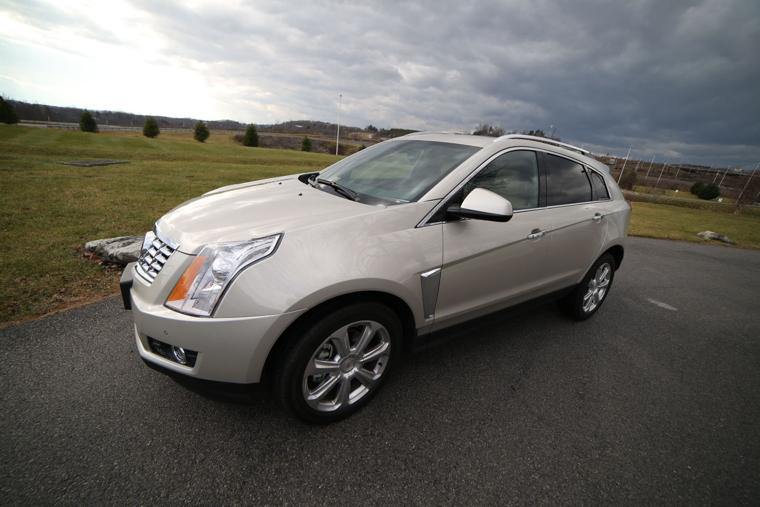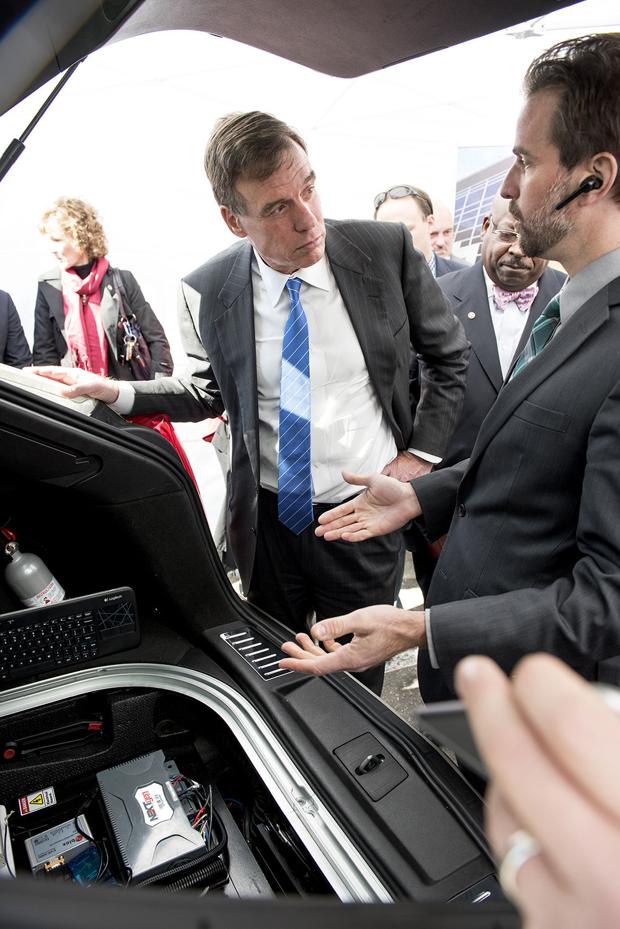Originally published by the Collegiate Times as News.
Published in print edition, front page, on Tuesday, Oct. 13, 2015.
The College of Engineering and the athletics department are collaborating on a $3.3 million, five-year study on head impacts in youth football.
 |
BLACKSBURG, Va. — A Virignia Tech football helmet on the field inside of Lane Stadium. All helmets worn by players have been rated five stars. Photograph by Christian Sterling/Collegiate Times
|
Stefan Duma is a professor and head of biomedical engineering and biomechanics at the Center for Injury Biomechanics (CIB), an interdisciplinary research center between the Virginia Tech College of Engineering and the Wake Forest University School of Medicine. He is also a member of the medical advisory committee at Pop Warner, a youth athletic league. Since 2003, Duma has been researching this field, revolutionizing football for players of all ages.
"The game is somewhat under attack right now because of its safety, and I think it's very important for us. Instead of just saying it's not safe, let's prove that it is safe," said Associate Athletics Director of Sports Medicine Mike Goforth, who has worked with Duma since 2001. "Sports make up a very small percentage of the concussions that happen across this country, but we would like to eliminate that or at least lower it. You're never going to eliminate it: kids get hurt on skateboards, they get hurt getting to their locker, they get hurt in all sorts of ways, but we would like to look at it from a sport standpoint to make sure we're doing everything we can to make this game safer."
Funded by the Institute of Neurological Disorders and Stroke at the National Institutes of Health, this study is the largest and most extensive analysis done on youth football players and will specifically focus on 7- to 13-year-olds.
"It is really rewarding because I was a youth football player myself," said Jake Smith, a first-year graduate student. "I really enjoy playing the game, and I know a lot of kids really enjoy playing the game. I understand the fear the parents have, but hopefully by making the game safer, it will give parents a peace of mind."
Five Virginia Tech biomedical engineering doctorate students are working on the study, including Smith, Megan Bland, Eamon Campolettano, Jaclyn Press and David Sproule. Steve Rowson, assistant professor of biomedical engineering, is involved in the study and has worked with Duma for the past 10 years. The research team will continue to work closely with the athletic department at Virginia Tech.
"In the past five years, we have really gotten into sports-player equipment and player performance," Duma said. "A lot of it has to do with the fact that Virginia Tech is an excellent environment for this type of research. It's a very unique environment to have all of these groups working together, and that's why we're able to do it and have the success that we have."
Other contributing universities are the Wake Forest School of Medicine, Brown University and the University of Nebraska-Lincoln. They will focus on data analysis of local youth football teams, conducting tests and collecting findings, including the fact that most big impacts occur during practices.
"Sports in America is important," Duma said. "One of the critical things here – and this is not just about football – we really need to better understand head injury risk in all of our sports."
In 2003, Virginia Tech was the first school to equip football helmets with non-accelerometers and has tracked more than 300,000 impacts on its team.
"The fact that I've got parents and kids all the time who talk about this sport and I don't want to lie to them," Goforth said. "I want to be upfront and honest, and this research gives me the opportunity to say that I think it's still a safe game, so it gives me peace of mind both for my kids and for the kids that I work with."
In 2011, Duma developed a
helmet star ratings scale, making the system the first of its kind with widespread application as an industry standard, for college, professional and youth football teams. One focus of the study is to optimize helmet safety for children's use.
"The helmet of an 80-year-old doesn't need to look like the helmet of a 22-year-old that a Tech player wears," Duma said. "We need to figure out what is the best way for the kids to play football and the best protection for them possible."
The football helmet ratings STAR evaluation system has been in place since 2011 and is based on pre-determined thresholds such as lowered head acceleration and frequency of impact. Helmet improvements are wide-ranging, influencing other sports and technologies, specifically with head impact sensors and for hockey, bicycle, construction and lacrosse helmets.
"I think (the helmets) have improved quite dramatically," Duma said. "We've shown that if you move from a one-star helmet to a five-star helmet, you reduce your concussion by 50 percent, so you cut it in half. We think that is a pretty dramatic reduction."
Currently, Virginia Tech football players are all equipped with five-star Riddell helmets, including the Speed, Speedflex and 360. Sensors are installed in all helmets to measure every hit, keep track of impacts and alert coaches when medical attention is needed. Helmets track data through wireless alerts sent to sideline antennas that measure linear and rotational acceleration.
"What we always try to emphasize is that no helmet is concussion-proof," Duma said. "What these helmets do is lower risk, but you still have to work with the players and the coaches to make sure that the game is played as safe as possible."
In addition to defining industry standards for helmets, Virginia Tech research has also tightened practice regulations for all levels of play, outdating potentially dangerous drills and limiting opportunities for impact.
"It means the world to us to think that we've got a chance to make this game safer for folks, like my own kids," Goforth said. "To see changes out there across our country that's happening with football and know that it all started right here in certain aspects of the things we're doing here at Virginia Tech – that means the world to us."
Duma's research prompted Pop Warner to change its rules regarding practice and concussion prevention in 2012. Currently, the injury rate in Pop Warner football is less than one-third in high school, less than one-fifth in college and less than one-ninth in professional.
"Sporting activities are an important part of the American culture and something that is certainly going to continue," Duma said. "We need to figure out a way to play all of these sports as safely as possible."
In 2014, there were 123 concussions in the NFL, with a consistent decrease over the years. According to a study by the 730 Football Championship Subdivision, for every diagnosed concussion, there were six suspected concussions that went undiagnosed.
"The most exciting part is how it touches so many people's lives," Smith said. "I've been very interested in the sport since a young age, so it is really cool to be in a study that I am passionate about."
Though concussions and injuries are not completely avoidable despite the star rating, research is progressing and strives to prevent lasting impacts and raise awareness by educating coaches, players and parents.
"Being an athletic trainer, you get involved because you love competition, you love sports and you love medicine," said Brett Griesemer, director of sports medicine. "Any way that you can kind of help not only medicine but help the game of football or sports in general become safer, both of those go hand in hand. Having a real hand in that process is special."
With more than a decade of research, Virginia Tech's team continues to be the sole leader in the industry. Findings and applications transcend beyond football and sports, making not only players safer but also active people of all ages.
"Will it help make it safer and hopefully protect some of the kids? Absolutely, there's no doubt about that," Goforth said. "Will it help save the game? I think it will."






